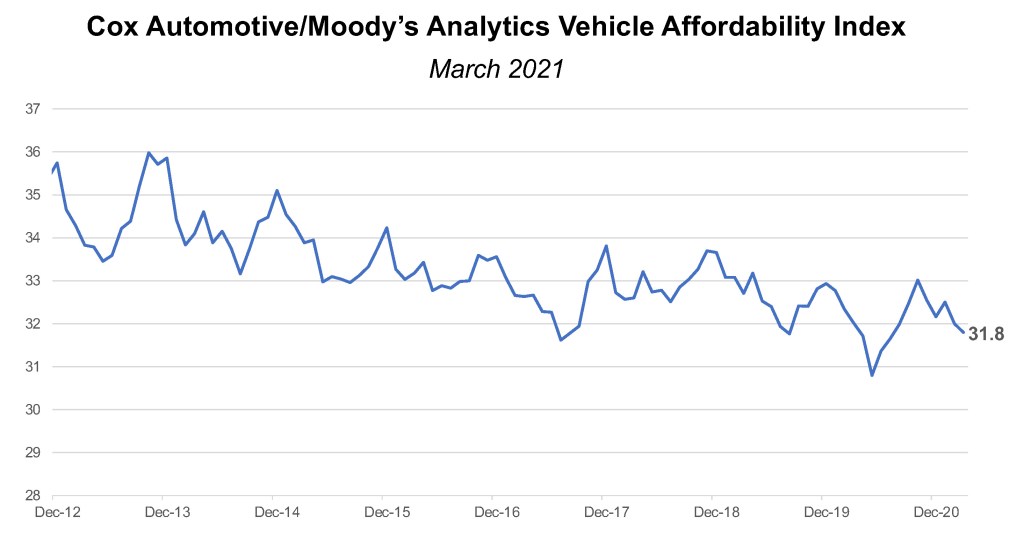Data Point
Vehicle Affordability Improves Again in March
Thursday April 15, 2021
For the fifth straight month, affordability improved in March, according to the Cox Automotive/Moody’s Analytics Vehicle Affordability Index. The number of median weeks of income needed to purchase a new vehicle declined to 31.8 weeks from an upwardly revised 32 weeks in February. The index shows that new vehicles have become relatively more affordable since October 2020, when the affordability index reached 35.3 weeks, the high point for the calendar year 2020.
In March, the price paid was modestly lower and the average financing rate declined, so the monthly payment declined. Median incomes softened from higher levels in December, January, and February, which were boosted by the effect of stimulus payments from the December stimulus package. Incentives also modestly declined in March and therefore moved against affordability, but not enough to offset the impact of lower prices and lower rates.
Incomes are likely to see more gains in April as we see the impact of new payments from the American Rescue Plan. With the income support and lower financing costs, affordability remains better than it was in February 2020 before the pandemic began. Affordability was strongest in May 2020 when incomes were the most supported by the original CARES Act, prices were lower, and incentives were higher. The year-over-year change is due to higher incomes and lower rates, but prices are higher now and incentives are down.
Click here for the full methodology for the Cox Automotive/Moody’s Analytics Vehicle Affordability Index.
The next update of the Cox Automotive/Moody’s Analytics Vehicle Affordability Index will be published on May 17, 2021.
The Cox Automotive/Moody’s Analytics Vehicle Affordability Index (VAI) is updated monthly using the latest data from government and industry sources, including key pricing data from Kelley Blue Book, a Cox Automotive company. This important industry measure will be released at mid-month to indicate if the prices paid for new vehicles are moving out of consumers’ financial reach or becoming more affordable over time.

